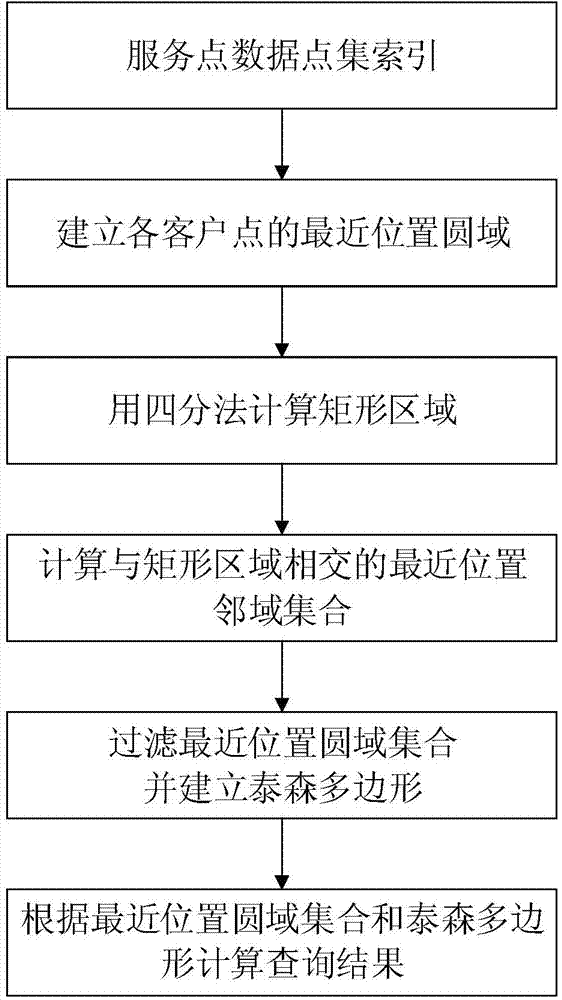Optical location method based on double-color reverse nearest neighbor query
A nearest-neighbor and two-color inversion technology, applied in the field of spatial database query, can solve problems such as distance factors are not considered, and achieve the effects of reducing I/O overhead and CPU time, optimizing performance, and reducing search space
- Summary
- Abstract
- Description
- Claims
- Application Information
AI Technical Summary
Problems solved by technology
Method used
Image
Examples
Embodiment Construction
[0034] Now in conjunction with accompanying drawing and concrete implementation technical scheme of the present invention is described further:
[0035] Such as figure 1 , figure 2 Shown, the specific implementation process and working principle of the present invention are as follows:
[0036] Step (1): Use the R-tree index for the service point data set, and maintain a rectangular area result list and a query result list;
[0037] Step (2): Take each point in the customer point data set as a query point, find out its nearest neighbor in the service point data set, and thus establish the nearest location circle of each customer point;
[0038] Step (3): According to the nearest position circle of each customer point, use the quartering method to obtain a rectangular area that meets the conditions, and put it into the rectangular area result list;
[0039] Step (4): For each rectangular area in the rectangular area result list, obtain the nearest intersecting circular doma...
PUM
 Login to View More
Login to View More Abstract
Description
Claims
Application Information
 Login to View More
Login to View More - R&D
- Intellectual Property
- Life Sciences
- Materials
- Tech Scout
- Unparalleled Data Quality
- Higher Quality Content
- 60% Fewer Hallucinations
Browse by: Latest US Patents, China's latest patents, Technical Efficacy Thesaurus, Application Domain, Technology Topic, Popular Technical Reports.
© 2025 PatSnap. All rights reserved.Legal|Privacy policy|Modern Slavery Act Transparency Statement|Sitemap|About US| Contact US: help@patsnap.com


